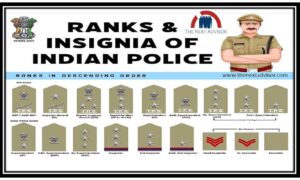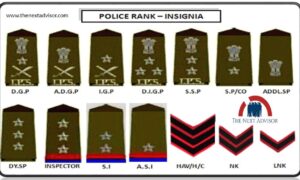INTRODUCTION of Doctrine Of Pith And Substance & Territorial Nexus
The Constitution of India has divided the extent of legislative powers between the Centre and states by way of the Seventh Schedule.
The Seventh Schedule specifies the subject matters and divides the power to make laws between the Centre and the State. The list I or the Union List contains matters where the Centre has the power to make laws, e.g. Defence, Foreign affairs and Currency. List II or the State list contains the subjects where the State has the power to make laws, e.g. public order, health and sanitation. List III or the Concurrent List contains subjects where both the Centre and the State have powers to legislate, e.g. Education, Forests and Administration of Justice.
Although their spheres of influence are well established in the Seventh Schedule, there often arise conflicts as to whether the Centre or the State, as the case may be, is encroaching upon the sphere of the other. To deal with this conflict, the courts in India have evolved a few doctrines and the age-old doctrine of the pith (the essence of something ) and substance (an essential part of something ) is one among them.
ORIGIN
It is widely believed that the origin of the doctrine of pith and substance lies in Canada and it was introduced in a case named Cushing v . Dupuy in the year 1880. The doctrine later made its way to India and is firmly supported by Article 246 of the Constitution and the Seventh Schedule. In India, it has evolved to become a celebrated doctrine that became the basis of many landmark Supreme Court judgements.
What is the Doctrine of Pith and Substance?
The doctrine states that within their respective spheres the state and the union legislatures are made supreme, they should not encroach upon the sphere demarcated for the other.
However, if one among the state and the Centre does encroach upon the sphere of the other, the courts will apply the Doctrine of Pith and Substance.
If the pith and substance i.e., the true object of the legislation pertains to a subject within the competence of the legislature that enacted it, it should be held to be intra vires although it may incidentally encroach on the matters, not within the competence of the legislature.
The Privy Council applied this doctrine in Prafulla Kumar Mukherjee v Bank of Khulna.
In this case, the Bengal Money Lenders Act of 1946 enacted by the State Legislature was challenged with the contention that parts of the legislation dealt with promissory notes; a central subject.
The Privy Council while upholding the validity of the impugned legislation stated that the Bengal Money Lenders Act was in pith and substance a law relating to money lenders and money lending – a state subject even though it incidentally trenches upon Promissory note – a central subject.
What is the Doctrine of Pith and Substance?
In-State of Bombay v FN Balsara, the Bombay Prohibition Act was challenged on the ground that it accidentally encroaches upon the import and export of liquor across custom frontier – a central subject. The court while upholding the impugned legislation declared that the Act was in pith and substance a State subject even though it incidentally encroached upon a central subject.
WHAT IS THE DOCTRINE OF TERRITORIAL NEXUS?
The Doctrine of territorial nexus states that laws made by the state legislature are not applicable outside the state. It is only applicable when there is a sufficient nexus between the state and the object. It is invoked during the following instances. Whether a particular state has an extra-territorial operation. If there is a territorial nexus between the subject matter of the Act and the state making the law .
The Doctrine of Territorial Nexus signifies that the object to which the law applies need not be physically located within the territorial boundaries of the state. Instead, it should have a sufficient territorial connection with the state. The state can levy a tax on the person, object or any transaction not only when it is situated within its territorial limits, but also when it has a sufficient and real territorial connection with it .
INGREDIENTS
The Doctrine is applied when the subject matter of List I of the Seventh Schedule is in conflict with the subject matter of List II.
The reason behind adopting this doctrine is that otherwise every law will be declared invalid on the ground that it encroaches upon the subject matter of another sphere.
The doctrine examines the true nature and substance of the legislation in order to determine which List it belongs to .
It takes into consideration whether the State has the power to make a law that encroaches on a subject matter from another list. The doctrine was first applied and upheld by the Supreme Court in the FN Balsara case .
CONCLUSION
The doctrine of pith and substance has provided the Indian constitutional scheme with much-needed flexibility because in the absence of this doctrine every other law would have been declared invalid because it incidentally encroaches upon the sphere of another legislature.
Apart from its applicability in cases related to the competency of the legislature as mentioned in Article 246, the Doctrine of Pith and Substance is also applied in cases related to Article 254, which deals with the repugnancy in-laws made by Parliament and laws made by the State Legislatures. The doctrine is employed in such cases to resolve the inconsistency between laws made by the Centre and the State Legislature.

























